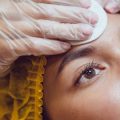Understanding Microneedling: A Quick Overview
Microneedling, also known as collagen induction therapy, has rapidly gained traction across the UK’s diverse skincare landscape. This minimally invasive treatment utilises fine needles to create micro-injuries on the skin’s surface, stimulating natural collagen and elastin production. In recent years, its popularity among British clients has soared, with clinics from London to Edinburgh reporting increased demand. Many are drawn by the promise of improved skin texture, reduced appearance of scars, and a more youthful complexion—without resorting to surgical interventions. Typical reasons for seeking microneedling in Britain include targeting fine lines and wrinkles, minimising acne scarring, and addressing pigmentation concerns common in variable UK climates. As awareness grows through social media influencers and trusted dermatology professionals, first-timers are increasingly curious about what to expect from this innovative procedure.
2. Addressing First-time Nerves: Typical British Concerns
For many British clients, embarking on their first microneedling session can be a source of genuine apprehension. These anxieties are often shaped by UK cultural sensibilities—such as a general preference for understatement, a reluctance to discuss personal insecurities openly, and a certain reserve around new beauty treatments. Below, we explore the most common concerns British clients may face and how these reflect wider national attitudes.
Common Anxieties Among British Clients
| Concern | Description | Cultural Context |
|---|---|---|
| Fear of Pain or Discomfort | Worrying about whether the procedure will hurt, especially given the typically understated discussion of pain in British culture. | Many Brits may downplay their fears, preferring not to make a fuss but feeling anxious internally. |
| Anxiety Over Results | Uncertainty about visible improvements and expectations versus reality. | The “wait and see” approach is common, with scepticism towards bold claims or overnight transformations. |
| Concerns About Safety and Hygiene | Nervousness regarding cleanliness standards and professional qualifications of practitioners. | The UK’s strong regulatory environment means clients expect high standards but may still seek reassurance. |
| Reluctance to Appear Vain | Worry that seeking cosmetic treatment could be perceived as superficial or self-indulgent. | The cultural value placed on modesty means some clients feel awkward admitting their motivations. |
| Uncertainty Around Aftercare and Downtime | Lack of clarity about recovery time and potential disruption to daily routine or work commitments. | The typically busy British lifestyle and value placed on reliability heighten concerns about inconvenience. |
Aligning With UK Cultural Sensibilities
British clients often appreciate discretion, thorough explanations, and a non-judgemental approach from practitioners. Transparency about what to expect, clear aftercare instructions, and sensitivity to the desire for natural-looking results are all highly valued. Practitioners who acknowledge these anxieties—without trivialising them—can foster greater trust and comfort among first-time clients. Ultimately, understanding these uniquely British perspectives helps both practitioners and clients navigate the initial nerves associated with microneedling sessions.

3. What to Expect on the Day: UK Clinic Protocols
Arriving for your first microneedling appointment in the UK, you can anticipate a welcoming and reassuring environment that reflects the country’s high standards in aesthetic care. British clinics typically pride themselves on maintaining pristine surroundings, with reception areas that feel both professional and inviting—designed to put even the most anxious clients at ease. Cleanliness and comfort are paramount, ensuring all treatment rooms are meticulously prepared and equipped with state-of-the-art devices meeting UK safety regulations.
The staff you encounter will be fully trained, holding qualifications in accordance with British industry standards such as those set by the Care Quality Commission (CQC) or the Joint Council for Cosmetic Practitioners (JCCP). You’ll notice a strong emphasis on professionalism; practitioners often introduce themselves, explain their credentials, and offer clear information about each step of the process. Empathy and discretion are hallmarks of customer care in reputable British clinics, where your privacy and concerns are treated with utmost respect.
From the moment you check in, you’re likely to experience structured protocols reflecting local best practices—this includes a thorough pre-treatment consultation where your medical history is reviewed and any last-minute questions are welcomed. Many clinics provide written aftercare guidance tailored for UK conditions (such as advice about protecting your skin from unpredictable British weather post-treatment). Ultimately, these protocols not only ensure your safety but also contribute significantly to reducing anxiety by fostering trust and transparency throughout your microneedling journey.
4. Aftercare Essentials: British Lifestyle Tips
Proper aftercare is crucial for achieving the best results from your microneedling session, especially when factoring in the unique aspects of British weather and daily routines. The UK’s variable climate—with its frequent rain, cool temperatures, and limited sunlight—calls for a tailored approach to post-treatment skincare. Here’s how you can integrate effective aftercare into your lifestyle using locally accessible products and practical advice.
Weather-Savvy Skincare: Protecting Your Fresh Skin
British weather can be unpredictable, but protecting your skin post-microneedling is non-negotiable. The following table outlines essential aftercare steps and recommended local products that are widely available across the UK:
| Aftercare Step | Why It Matters | UK-Approved Product Examples |
|---|---|---|
| Gentle Cleansing | Prevents irritation and supports healing | Cetaphil Gentle Skin Cleanser, Simple Kind to Skin Facial Wash |
| Hydration & Moisturising | Keeps skin barrier strong, especially against cold winds | CeraVe Moisturising Cream, E45 Cream |
| Sun Protection (even on cloudy days) | Reduces risk of hyperpigmentation from UV exposure | La Roche-Posay Anthelios SPF 50+, Boots Soltan Sensitive Face SPF 30 |
| Avoiding Harsh Ingredients | Prevents stinging or delayed healing (avoid retinol, acids) | N/A – check ingredient lists before use |
Incorporating Aftercare into a Typical British Routine
If your day involves commuting through city air or braving the elements during a countryside walk, extra attention to cleanliness and barrier repair is advised. Always carry a mini moisturiser in your bag for midday top-ups, particularly during winter months when central heating dries out the skin. For those who love their evening cuppa or pub garden gatherings, remember to stay hydrated with water as well—microneedling recovery thrives on internal hydration.
Local Habits: What to Avoid After Microneedling
- Saunas & Steam Rooms: Although tempting in colder weather, avoid these for at least 48 hours post-treatment to prevent irritation.
- Pubs & Social Gatherings: Limit alcohol intake immediately after treatment as it may exacerbate redness or swelling.
- Outdoor Activities: Use hats or scarves for additional protection if outdoors for extended periods, regardless of sunshine levels.
The Takeaway: Embrace Recovery with Confidence
Your microneedling experience doesn’t end at the clinic door. By adopting these culturally relevant tips and leveraging trusted British products, you’ll set yourself up for optimal results—rain or shine.
5. Making the Most of Your Appointment: Questions to Ask
As a first-time microneedling client in the UK, approaching your appointment with well-informed questions can help alleviate anxiety and ensure you receive safe, high-quality care. British practitioners are accustomed to clients seeking clarity before starting a new treatment, so don’t hesitate to ask detailed questions during your consultation. Key considerations include confirming that your practitioner is registered with an appropriate regulatory body—such as the General Medical Council (GMC) or the Nursing and Midwifery Council (NMC)—and understanding their experience with microneedling specifically for British skin types and common concerns like pigmentation or rosacea.
It’s advisable to ask about the type of device being used (medical-grade versus cosmetic-grade), as UK regulations distinguish between these, affecting both efficacy and safety protocols. Enquire about hygiene standards: How are tools sterilised? What single-use items are in place to prevent cross-contamination? You should also clarify expected results based on your own skin profile, and request information about realistic timelines for visible improvement. For those with a busy British lifestyle, understanding post-treatment downtime is crucial—will you be able to return to work or use public transport straight away, or should you plan for a quieter day?
Additionally, discuss aftercare products that are suitable for the UK climate, such as SPF recommendations given the unpredictability of British weather, and whether certain skincare ingredients common in local chemists should be avoided post-treatment. Finally, ask about pricing structures and any available payment plans, as transparency is highly valued among UK clients. By arming yourself with these targeted questions, you’ll maximise your appointment’s value while fostering trust and confidence in your chosen practitioner.
6. Setting Realistic Expectations: UK Results and Trends
Understanding what to expect from microneedling is crucial for British clients, especially those new to the procedure. While this innovative treatment is renowned for its ability to rejuvenate skin and address concerns such as fine lines, acne scarring, and pigmentation, it is important to approach outcomes with a balanced perspective. Here’s what you need to know about results, session frequency, and emerging trends within the UK’s skincare landscape.
Advice on Anticipated Outcomes
Microneedling offers gradual improvements rather than instant transformation. British clients can typically expect visible enhancements in skin texture, firmness, and radiance after a course of treatments. However, factors such as age, skin type, and the extent of your concerns all play a role in individual results. It’s common for practitioners across the UK to recommend patience, as collagen production and skin healing are processes that occur over several weeks.
Frequency of Sessions
For most first-time clients in the UK, a series of three to six sessions spaced four to six weeks apart is advised for optimal results. Maintenance treatments every few months are popular among those seeking long-term benefits. Your practitioner will tailor this schedule based on your unique needs and how your skin responds to initial treatments—a distinctly client-centric approach embraced by reputable British clinics.
Trending Approaches Among British Clientele
The UK market has seen a surge in demand for minimally invasive treatments like microneedling that promise effective results with minimal downtime. Combination therapies—such as pairing microneedling with topical serums or LED light therapy—are increasingly popular among discerning British clients seeking bespoke solutions. Additionally, there is growing interest in sustainability and transparency, prompting many clinics to adopt eco-friendly practices and clearly communicate ingredient sourcing for post-treatment products.
Final Thoughts
By setting realistic expectations about microneedling outcomes and following professional advice on session frequency, first-time British clients can navigate their anxiety and make informed choices. Staying attuned to evolving trends ensures you benefit from the latest advancements while enjoying safe, evidence-based care tailored for the UK context.

